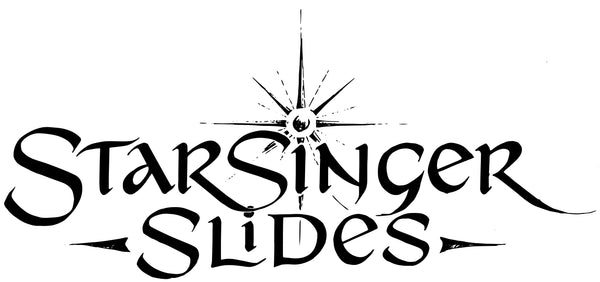Alternative Tunings and When to Start Exploring Them
If you've been playing slide guitar for a while, or even if you're just starting to research it, you’ve probably come across the idea of alternative tunings like Open G, Open D, or DADGAD. While these tunings can open up entirely new worlds of sound, I believe that beginners should hold off until they’ve mastered the basics in standard tuning. But once you’ve got the hang of it, alternative tunings can really take your slide playing to the next level. Let’s break down why and how to approach them.
Why Start with Standard Tuning
Before diving into alternative tunings, it’s important to build a solid foundation in standard tuning. Like I’ve mentioned in my other tips, standard tuning allows you to apply your existing knowledge of the guitar, making the learning curve less steep. When you’re ready, however, exploring alternative tunings can introduce new sonic textures and simplify certain slide techniques. It’s all about timing—once you’re comfortable in your slide playing and want to expand your toolkit, that’s when it’s worth taking the plunge.
The Power of Open Tunings
The most common slide tunings are Open G (DGDGBD) and Open D (DADF#AD), both of which give you a full chord just by strumming the open strings. This means that playing with the slide becomes much simpler—you don’t have to worry about complex fingerings, and you can focus more on your expression, dynamics, and feel. It’s also much easier to hit those big, resonant chords with a slide when you're in an open tuning, which can sound amazing for blues, country, or folk.
Advantages for Slide Guitar
Open tunings can make playing with a slide a lot more intuitive. For instance, in Open G or Open D, sliding across the strings in a straight line gives you major chords at every fret. This means you can play entire chord progressions with just a slide and barely any left-hand work. It can also make it easier to experiment with melodies, as many notes line up neatly in a way that feels "made" for slide guitar.
But while this simplicity is one of the main draws of open tunings, it also comes with a new set of challenges—learning to navigate the fretboard in a new tuning, understanding where the notes and chords are, and adjusting your ear to the new sound. That's why I recommend waiting until you’ve built up some confidence in standard before taking this step.
Popular Tunings to Explore
- Open G (DGDGBD): One of the most popular tunings for slide, used by legends like Muddy Waters, Keith Richards, and Ry Cooder. It has a rich, resonant sound and is perfect for blues and rock. It’s also versatile enough for fingerpicking and other styles.
- Open D (DADF#AD): Often used for Delta blues and bottleneck slide. It has a slightly deeper, more melancholic sound than Open G and lends itself to slower, more expressive playing.
- DADGAD: Known as the "Celtic" tuning, DADGAD offers a modal sound and can be fantastic for folk and more experimental slide guitar. It’s less common in blues but opens up some really interesting harmonic possibilities.
- Open E (EBEG#BE): Similar to Open D but tuned a whole step higher, Open E has a bright, powerful sound. It was a favorite of Duane Allman, and you’ll hear it in a lot of classic rock slide solos.
Transitioning to Alternative Tunings
When you’re ready to start experimenting with alternative tunings, start simple. I recommend beginning with Open G or Open D, as they’re the most common and have tons of resources and tutorials available. Spend some time learning the chord shapes and scales in your chosen tuning—don’t rush it. Try applying the same box patterns you used in standard tuning to see where they land in the new tuning. You’ll be surprised at how familiar shapes can produce entirely new sounds.
Once you’ve gotten comfortable in one tuning, feel free to experiment with others! Each one offers its own unique set of tonal possibilities, and the more you explore, the more you’ll develop your own voice as a slide player.
Balancing Open and Standard Tunings
Even as you explore alternative tunings, don’t abandon standard tuning. One of the biggest advantages of standard is that it allows you to blend slide playing with regular guitar technique. Keeping a balance between the two will make you a more versatile player overall. You’ll be able to move between standard and open tunings effortlessly as the song or situation calls for it.
